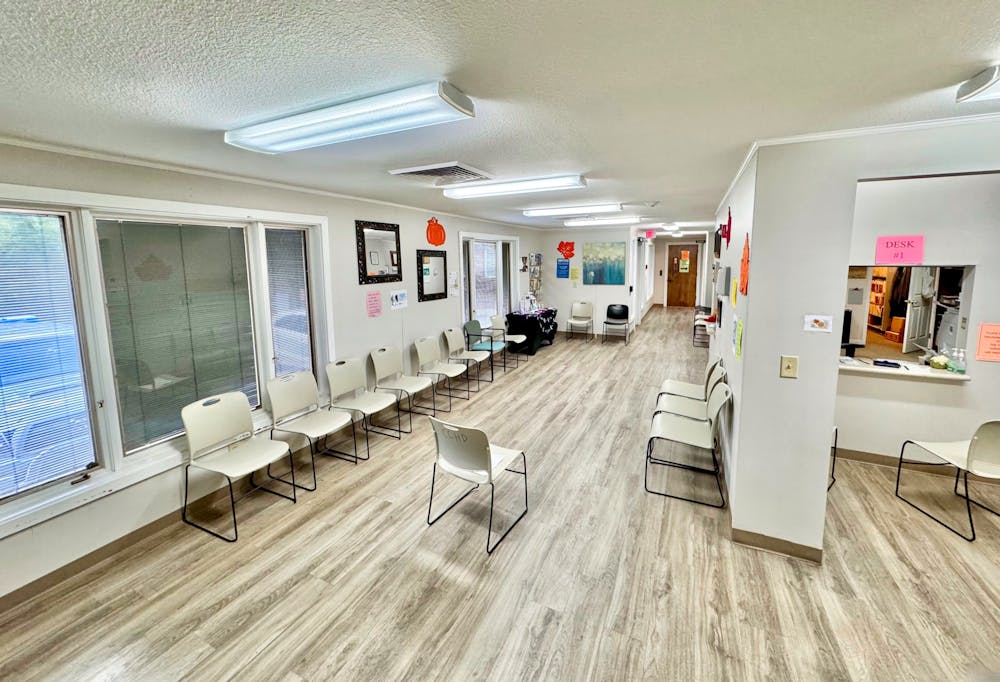The Johns Hopkins Institute for Clinical & Translational Research hosted the 14th annual Henrietta Lacks Memorial Lecture on Oct. 5 to honor the lasting legacy of Henrietta Lacks. Her cells, taken without her consent in 1951 became one of the most important tools in biomedical research, leading to countless breakthroughs in science. However, her story also brings to light the intersection of medical ethics, race and the treatment of marginalized communities in research.
The keynote speaker for this year's lecture — Eliseo Pérez-Stable — is the director of the National Institute on Minority Health and Health Disparities (NIMHD). His lecture focused on the mission of NIMHD and its various programs, detailing its research into the causes of health disparities among historically underserved populations and its partnerships throughout the United States in order to promote community-based research. The NIMHD also aims to diversify the biomedical and clinical fields and, ultimately, pushes to address and eliminate health disparity in America.
Pérez-Stable highlighted the unique importance of NIMHD through its connection to the government.
“[We are] mandated by Congress to coordinate... [and] think strategically [about] what all of NIH does... what are the issues in the different areas that should be addressed," he said.
Health disparities are the preventable differences in the health status of different populations. According to Pérez-Stable, the two main drivers of health disparities research are socioeconomic status and race/ethnicity. In the 1980s, investigation into health outcomes revealed significant variance associated with racial and ethnic identity, the causes of which were unknown, prompting a reevaluation of national healthcare and leading to the formation of the NIMHD in 2000.
The NIMHD focuses on the causes of health disparities, many of which are linked to structural inequities. Pérez-Stable cited a study conducted in New York City that stressed the importance of education, employment, environmental issues and nutrition, which all vary wildly depending upon the address of a patient, impacting their health outcomes.
"[Diabetic] patients were told to eat... low-fat milk, whole grain bread and several other kinds of healthier foods, but [the patients] lived in a neighborhood where there were no supermarkets... and didn't have access to other transportation," he said.
He went on to discuss disparities in US life expectancy by race, ethnicity and even education level — those with a college degree tend to have dramatically better health outcomes. He voiced apprehension about a waning concern regarding the perceived unfair treatment of minority populations in healthcare — a popular talking point among healthcare organizations in the wake of the George Floyd protests. Perceived unfair treatment, according to Pérez-Stable, exacerbates health disparity, especially among racial groups.
Pérez-Stable noted that one of the key challenges in improving health outcomes for marginalized populations is ensuring that they are adequately represented in clinical research. Historically, clinical studies have often excluded women, people of color and other minority groups, leading to a lack of understanding of how different populations may respond to treatments and medications.
This has prompted the NIH to now mandate that women and racial/ethnic minority groups must be included in all NIH-funded clinical research studies.
Pérez-Stable also emphasized the importance of community engagement in health research, which he sees as equally important as the research itself.
He stated, "We all get excited about the shiny new technology... the new drug or the new gimmick ... but [the] value of being able to connect with any human being, develop a trusting relationship with them and being skilled at being able to manage problems... needs to be emphasized and built as the foundation of our healthcare system."
Without trust and cooperation from communities, scientific progress can’t effectively reach those who need it most. He talked about programs, such as NIH's Community Engagement Alliance (CEAL), that are designed to work with community-based organizations to provide science-based, culturally relevant information to underserved communities, in the process combating misinformation and health inequity.
NIMHD believes that one of the most important solutions to addressing health disparities is diversifying the scientific and medical workforce, in itself a form of community engagement. Despite Latinos, African Americans, Native Americans and Native Hawaiians being only about 14% of medical students in a given graduating class, non-white physicians care for 53.5% of minority patients and 70.4% of non-English-speaking patients.
To explain one of the benefits of a diverse medical workforce, Pérez-Stable highlighted a study done in Northern California on ethnic concordance with Latino/Hispanic clinicians.
“[Patients] taking their diabetes medicines and having better control of their diabetes was shown when there was language concordant of Spanish speaking patients with diabetes and this value on communication skills and sustaining a trusting relationship is at the core of what we would call primary care, whether it's for adults or children, and it has been mostly undervalued by our system and our medical schools,” he said.
NIMHD, therefore, promotes diversity, equity and inclusion activities, taking bills through Congress to form programs like the John Lewis NIMHD Research Endowment Program, which aims to provide millions of dollars of research funding to universities and institutions that have higher rates of underrepresented racial and ethnic groups, like HBCUs.
While reflecting on the legacy of Henrietta Lacks and honoring her contribution to science, it’s important to also consider how to continue addressing health disparities. Pérez-Stable’s work serves as a reminder that science is not only about breakthroughs in laboratories but also about building trust with communities, addressing systemic inequities and ensuring that everyone, regardless of race, ethnicity or socioeconomic background, has the opportunity to live a healthy life.





